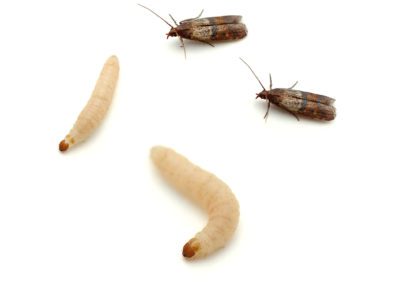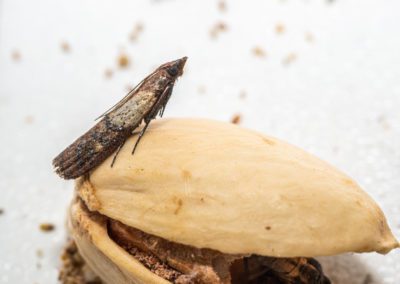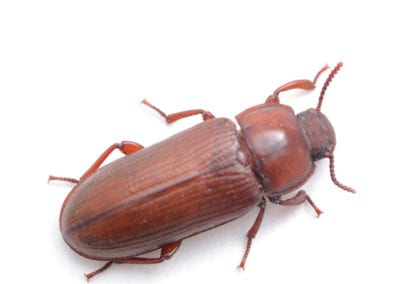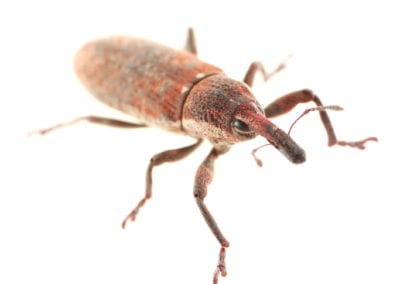Indian Meal Moth
Our remedy for Indian meal moth control
First, contact us. Indian meal moths are often confused with clothes moths. Proper species identification is crucial to locating the source of a pantry pest infestation as well as prescribing a proper solution suitable for your unique environment.
Sanitation and food storage best practices are the key in preventing Indian meal moths.
- All dry stored products need to be inspected, along with dried flowers, decorative items such as Indian corn and shadow boxes containing seeds, spices and even taxidermy.
- Dog food and bird seed are oftentimes the culprits, as these large bags tend to be improperly closed and kept in garages and basements.
- Anything in question should be discarded, as it could be contaminated and harmful if consumed.
- Clean spilled grain and infested cabinet areas using a vacuum followed by soapy water or a mixture of hot water and household cleaner.
- Wipe down all sides of shelves and walls.
- Store all dried food goods in a glass, plastic zipped bags, or plastic containers with a tight lid to avoid further contamination and limit spreading if one food becomes infested.
- Consider storing cereals and similar foods in the refrigerator to limit stored pantry pest problems.
The Indian meal moth and several other pantry pests are all covered under our most popular residential service, the Healthy Home Maintenance Program.
How to Identify a Indian Meal Moth
Appearance
5/8-3/4″ long. Dark brown with four light multi-colored patches on its wings; the head extends into a long thin “beak”.
Habitat
Indian meal moths are attracted to light and tend to become active around dusk. They make coccoons in wall corners and crevices, which are often mistaken for spiderwebs. The larvae look like small worms, they contaminate products they infest, and they’re capable of chewing through plastic and thin cardboard. Adults don’t live more than a week, but females are capable of laying 200 eggs at once, allowing infestations to get out of control quickly.
Diet
Indian Meal Moths feed on dried fruits, grains, cereal, seeds, nuts, chocolate, candy, dog food, baking ingredients, spices and other stored pantry or cupboard products.
Additional Imagery
Is This Your Critter?
Maybe it is, maybe it isn’t. We can handle the identification and get you a solution to your problem quickly.
Get a remedy now. Send a message!
Not Your Pantry Pest?
Here are some of the others found in the Midwest.

No more ants inside our home!
“We have been using this pest control company for a few years. We have been very satisfied. No more ants inside our home! Keith our technician is very personable and does a very thorough job.”
Kathy A. | Homeowner
Carmel, IN
Safe For Your Family and Business
We’re licensed, trained, and certified by the Departments of Public Health and Agriculture, using safe, EPA-regulated materials, always.
Attacking Infestations at the Root
We don’t come in spraying. We evaluate the root of your problem, and recommend and enact pre-emptive measures before any chemicals are used.
Assessments Before Any Contracts
Our Customer Care Center walks you through every service, every charge, and every solution before you agree to anything. Our commitment is to you.
















